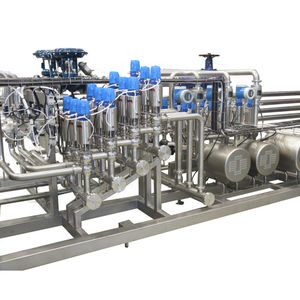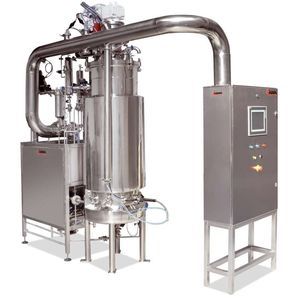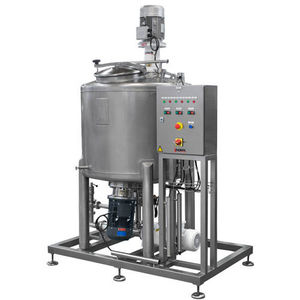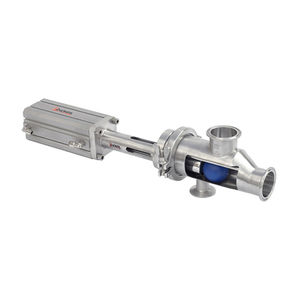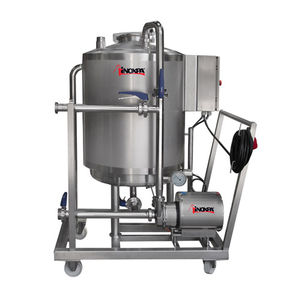
Double cone blender MBC seriesbatchsolidpowder


Add to favorites
Compare this product
Characteristics
- Technology
- double cone
- Batch/continuous
- batch
- Product type
- solid, powder
- Other characteristics
- double
- Applications
- for the food industry
- Engine power
Max.: 15 kW
(20.39 hp)Min.: 1 kW
(1.36 hp)- Capacity
Max.: 4,200 l
(1,109.52 gal)Min.: 160 l
(42.27 gal)- Empty weight
Max.: 2,500 kg
(5,511.6 lb)Min.: 810 kg
(1,785.7 lb)
Description
The double cone blender is used to produce homogeneous solid-solid mixture. Mixing is a common process step in the manufacture of products for industries such as healthcare, food, chemical, cosmetics, detergents, fertilizers and plastics. Double cone solids blenders are widely used in these industries.
Examples of materials or substances mixed in this way include pharmaceutical granules, semolina flour, seeds, starch, coffee beans and ground coffee, cocoa, chocolate flakes or granules, powdered milk, baby food, preparations to make dehydrated soups and creams, leaf waxes, detergent granules, soap flakes, artificial fertilizers, plastic in powder, ground or pellet form, fibreglass, etc.
The main body of the blender consists of two cone-shaped sections welded at their bases to a central cylindrical section. The axis of rotation is perpendicular to the cone axis and passes through the cylindrical section. The driving motor is located at one of the two lateral supports holding the blender body.
The solids are introduced into the double cone blender through the loading aperture. In this type of blender, mixing takes place axially, as a result of the powder moving through the different sections. Mixing is thorough but it depends on the rotating speed.
The mixture is discharged through a hermetically closing butterfly valve which can be operated manually or automatically.
The unit is provided with a guard rail with electrical safety to prevent the operator from accessing it when in operation. If anyone should gain access to the unit, for safety reasons, the operation will cease.
VIDEO
Catalogs
No catalogs are available for this product.
See all of INOXPA‘s catalogsExhibitions
Meet this supplier at the following exhibition(s):
Related Searches
- Dynamic homogenizer
- Batch homogenizer
- Liquid agitator
- Homogenizer for the food industry
- Solid blender
- Vertical agitator
- Agitator for the chemical industry
- Stainless steel agitator
- In-line mixer
- Powder blender
- Solid/liquid homogenizer
- Horizontal blender
- Agitator for the pharmaceutical industry
- Turbine agitator
- Homogenizer for the cosmetics industry
- Compact agitator
- Vacuum homogenizer
- High-speed homogenizer
- Automatic homogenizer
- Explosion-proof agitator
*Prices are pre-tax. They exclude delivery charges and customs duties and do not include additional charges for installation or activation options. Prices are indicative only and may vary by country, with changes to the cost of raw materials and exchange rates.


